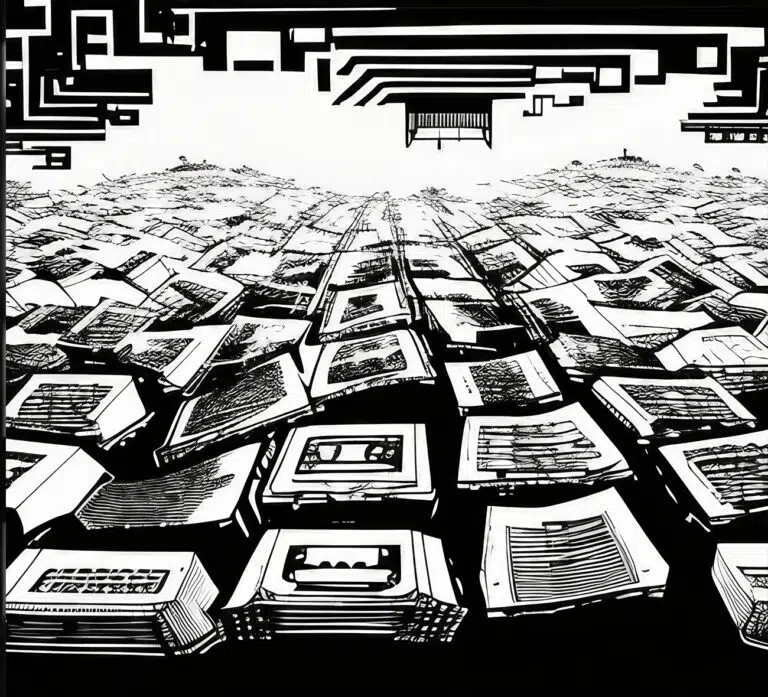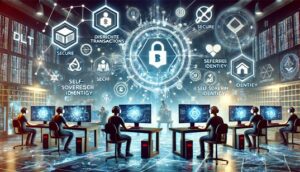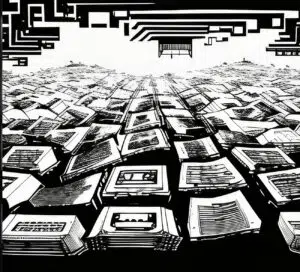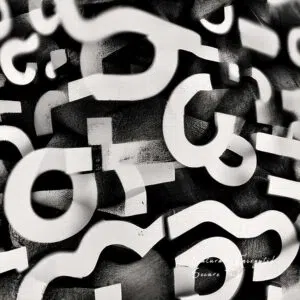
Kiril Nikolov is Senior Sales Executive at major digital assets company Nexo.
__________
We all know of non-fungible tokens (NFTs) but don’t use them in our day-to-day lives. With exposure to NFTs increasing, what’s it going to take to bring these assets fully into everyday life? What is mainstream and are NFTs there yet? If we take “mainstream” to be the normalization and wide use of NFTs by institutions, big names, and most importantly, the everyday user – then no, NFTs are not 100% mainstream (yet). Even though many have encountered the acronym, most regular people haven’t the faintest idea of how to utilize NFTs and what their true potential is. NFTs are already being popularized by big corporations and celebrities, creating exposure and visibility. Still, there is a lot of water to tread before this corporate activity around the asset class leads to actual usage among the wider public. So where are we at with all this renown-brand-level buzz around NFTs, and what more do we need to make NFTs truly mainstream rather than just the talk of the town?
Enter the big brands…
They’re prominent and pretty noticeable in the media – they’re big brands, naturally, and given their impact, let’s unpack institutional NFT adoption first. In 2021, world-renowned organizations like Visa, Mastercard, Nike, Adidas, the NBA, Coca-Cola, and many more sunk their teeth into NFTs. Today, even Walmart is preparing to bring the asset class into their business. All these companies had different approaches to how they “tried out NFTs,” and each has a distinct bearing on the assets.
The acquisitions have begun
VISA initially dipped their toes into the space the most standard way: by purchasing a non-fungible token from the most sought-after collections: a CryptoPunk in this case. Adidas also made an eyebrow-raising NFT acquisition worth USD 156,000, purchasing the Bored Ape now referred to as Inigo Herz. These moves are investments that also appeal to trending content and guide people’s gaze towards NFTs. And yet it is not enough to fuel true mainstreamification as its effect remains focused on the company rather than long-term client engagement with the asset class. This is not necessarily a bad thing; it’s a good start. In fact, corporate NFT acquisitions contribute to developing companies’ core competencies and capabilities to expand their NFT offerings. It’s also through such acquisitions that Christie’s and Sotheby’s have made big companies buying NFTs the norm in the second half of 2021.
The collectibles approach
As an alternative to simply acquiring NFTs as investments, big names like Nike, the NBA, Coca-Cola, and even Macey’s took the route of creating NFT versions of collectibles to boost engagement with their communities. Nike began by issuing NFTs that guarantee the veracity of its sports shoes; the NBA minted NFTs of specific moments from past seasons that users could now own; and Macey’s auctioned off themed tokens of their Thanksgiving Parade.
While collectibles are not the pinnacle of practicality and only lean on a small part of NFTs utility potential (namely ownership), it’s a step in the right direction with the famous brands enticing communities to engage with and even own their NFTs, thus slowly coaxing users to dabble in and learn how to store, move, and utilize them. However, one of the issues with this approach is that it is only viable for the crypto native – people who would already know how to navigate the blockchain space (wallets, marketplaces and all). Big brands bring an undercurrent of NFT transmission to their retail user base by putting NFTs in the public eye and even in people’s hands (or wallets as is the case). The next step is for companies to start contributing to building up NFT utilities. This means further integrating NFTs into their everyday client offerings, thus unintrusively strengthening exposure to those for whom these assets would otherwise be inaccessible, given that their technical nature remains outside of most people’s comfort zones.
NFTs as access & rights
Celebrity brands arguably direct attention towards NFTs just as well as companies. Some such as Mila Kunis and Orchard Farm Productions’ Stoner Cats venture also go beyond the classic investment in non-fungible tokens and publicity stunts and actually popularize NFTs via one of their utilities different than ownership. Stoner Cats was among the first celebrity NFT collections to explode globally, raising USD 8m upon its initial launch. And indeed these non-fungible cats are more than a simple vanity project: they’re a means of implementing the Web 3 decentralized ethos into the entertainment industry. Per the Stoner Cats team, “…content creators and fans should be able to connect and trade art directly without all the bureaucratic bullshit.”
With subscription services like Spotify, Netflix, and HBOGo growing in popularity and becoming centralized hubs for entertainment distribution, Stoner Cats NFTs stands as the decentralized antithesis to the otherwise centralized power in the film industry. Beyond giving holders more than just simple access to Stoner Cats episodes, this endeavor can be developed to include holders in its governance, thus solving an age-old decision-making problem regarding what art gets financing and ultimately what gets to see the light of day.
What more could NFTs possibly need?
No matter how far we get into NFT adoption through extensive brand exposure, only an estimated 106m people currently operate with crypto assets. Global crypto adoption remains less than 30% in most countries. Even in places with the highest levels, like Nigeria, crypto is used by slightly over 30% of the population. With NFTs, that number becomes even smaller as even seasoned crypto natives still stray from the asset class. The solution to this isn’t just improving tech literacy. In an increasingly complex world, people will become more specialized, and that’s ok, good even. But it puts the onus on those focused on blockchain and Web 3 to make its cornucopia of possibilities (like the non-fungibles in question) accessible to others.
So then, why do NFTs only seem to have one foot in the mainstream door, even with the extensive institutional and brand campaigns, mentions, the virality of celebrity, and social media momentum? Arguably, the gap lies in the missing utility and services for NFTs that would make them useful to the everyman, rather than just to the technologically savvy, the corporations, and the ultra-rich. We’ve developed some NFT utility, mainly in the face of ownership rights for art and access to exclusive clubs. But that’s not enough, and frankly, it’s the equivalent of spitting in the face of NFTs’ actual capacity. Currently absent from the lineup of services are basics like financial tools, unfolding NFTs potential for fractional ownership, and user-friendly minting, storage, purchasing capabilities. Fortunately, there are already organizations – explored below – that have begun creating such services.
Financial services for NFTs
NFT’s as financial instruments represent fascinating opportunities, like being collateralized for loans. When looking at NFT’s such as Bored Apes, in the traditional world, the closest equivalent would be art financing, which allows capital efficiency on behalf of NFT investors. Even more complex tools are also emerging, including derivative trading products, allowing, for example, lenders to hedge their exposure to specific downside risks of holding NFT’s as collateral. For NFTs to progress further, these tools will require further expansion, popularization, and user-friendly platforms to host them.
Web 3-native fractional ownership
Fractional ownership (ex. owning 1/1000th of a zombie CryptoPunk) and building on existing options for collective ownership are options that currently proliferate the decentralized autonomous organization (DAO) space with examples such as ConstitutionDAO, which gathered funds in an attempt to purchase the last privately owned copy of the US Constitution. Had the decentralized autonomous organization won the auction, all its contributors would have gained fractional ownership and governance rights to the artifact. А similar example is of a DAO collecting funds to buy an NBA team called Krause House. The possibilities of NFT fractional ownership are limitless and could empower many people to own, use and participate in decisions about teams, valuables, events, real estate, anything really, that are currently completely out of their reach.
Social coordination tools for NFTs
The industry is also already being given a glimpse of what bringing easy-to-use functionalities to less blockchain-native users looks like in Meta’s hot-off-the-press announcement to bring NFT minting, selling, and sharing capabilities to Instagram. While previously mentioned cases like Nike, Stoner Cats, the NBA, and others are only just teasing the surface of integrating NFTs into their respective industries, Meta is on the verge of putting the NFT craze into an existing user interface (UI) everyone is familiar with.
Popularizing the metaverse as NFTs’ initial home
Similarly to Nike building Nikeland on Roblox – a centralized virtual world – and bringing its users closer to a metaverse-native brand experience, we need to think about moving from popularising the Web 2 versions of these activities towards their Web 3, decentralized counterparts like Decentraland, Somnium Space, Axie Infinity, and others. Translating these experiences into Web 3 will inevitably guide more users to wander into these worlds where NFTs define anything from access, property, fashion, investments, items, and even gameplay.
The Metaverse ownership of digital goods has also spun its own version of traditional business models. Decentralized finance (DeFi) companies such as Enter DAO’s digital property lending model called Landworks, where you can lend out your SAND or MANA digital real estate as a passive income, just like you would your own apartment. Other exciting niches created in the space include GameFi (gaming + DeFi) guilds, which are providing talented players in the Play-to-Earn realm with the highest quality NFTs to improve their in-game performance. In a win-win scenario, players are able to generate additional income, while NFT owners can earn additional passive income on top of their NFT. While the metaverse will survive and thrive, and we’ll all need to learn to use it and items in it – like NFTs – humans are still biological creatures; we still live in bodies tied to a physical reality, one the metaverse can enhance. In this line of thought, it is imperative for NFTs’ ultimate triumph that the metaverse is only the initial place where we operate with these assets.
Beyond this, we need to find ways to weave them into the physical world. For the time being, progress on this is slow but not non-existent, and as with a lot of NFT development, it is beginning in the arts sphere with engagements like an NFT Museum in The Netherlands. Should large brands, innovative FinTechs, DAOs, and art entrepreneurs continue to build on their current NFT initiatives, a bright future lies ahead for the mass use of non-fungible tokens.






